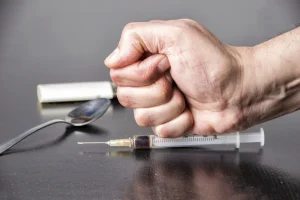
After the effects of ecstasy wear off, the brain is left with depleted levels of serotonin and other chemicals. Over time, repeated use of ecstasy trains the brain to rely on the drug for happiness and pleasure, making it harder for the brain to produce these feelings naturally. However, it is rarely pure and may be mixed with other substances, such as amphetamines, ketamine, or harmful chemicals.
- By the time a person realizes they are overdosing, it may be too late to get help.
- This condition is a direct result of poor oral hygiene and decreased saliva production caused by amphetamine use.
- Highly palatable foods and drugs of abuse may cause comparable patterns of brain activation.
- Chronic use can lead to severe cardiovascular problems, including hypertension and heart attacks, mental health issues such as anxiety, depression, and psychosis, and neurological harm leading to cognitive deficits.
How to Foster Emotional Connection with Loved Ones After Addiction
- By helping clients identify and challenge underground thought processes, such as catastrophizing or all-or-nothing thinking, CBT provides a pathway to recognizing the flaws in these beliefs.
- Therapy may be undertaken on an individual or group basis and could possibly involve family members.
- These medications are part of the phenethylamine group, which includes drugs that can cause hallucinations, enhance a desire for social contact, or act as stimulants.
- PAT is still considered a novel treatment model, with many therapies taking place in isolated experimental trials, which can vary widely in procedures and therapeutic approaches depending on the medical trial.
- No tests can determine drug misuse or addiction, but a medical professional can discuss a person’s substance use with them and assess possible risk factors that support the possibility.
- Furthermore, long-term amphetamine use may contribute to mental health disorders, such as depression and psychosis.
Family involvement in counseling is also a positive approach to help educate family members about the condition and explain the challenges and needs of the patient throughout recovery. Positive test results can lead to disciplinary actions, including termination of employment. Amphetamine use can lead to severe dental problems, including tooth decay, gum disease, and tooth loss due to the drug’s impact on saliva production and hygiene neglect. Chronic amphetamine users often suffer from “meth mouth,” characterized by extensive dental caries and periodontal disease. This condition is a direct result of poor oral hygiene and decreased saliva production caused by amphetamine use. Addiction is a complex disease that affects the brain’s reward system and leads to compulsive drug-seeking behavior.

Amphetamine Abuse & Addiction Symptoms, Signs, Causes & Effects
The first step in treating amphetamine addiction is often medically supervised detoxification. This process helps manage the acute physical withdrawal symptoms that occur when an individual stops using amphetamines. Psychological factors are also critical in the development of amphetamine addiction. Mental health disorders, such as anxiety, depression, and ADHD, are often underlying conditions that lead individuals to misuse amphetamines either for self-medication or as part of a prescription that turns into abuse.

Physical Symptoms and Signs
Additionally, amphetamine addiction can have profound effects on the brain’s structure and function. Studies have shown that prolonged amphetamine use can lead to neurotoxicity, damaging neurons and affecting cognitive functions such as memory and decision-making. If you’re dependent on amphetamines and are taking more than the required daily amount prescribed by your healthcare provider, you shouldn’t breastfeed. It’s even possible to develop a use disorder if you take amphetamines according to your doctor’s directions. One of the most common signs someone is on amphetamines and possibly abusing them is talkativeness.
Eating to Increase Pleasure or Reduce Negative Feelings
However, all pills have the potential to cause addiction whether they are legal or otherwise. Therefore, it’s imperative to read the warning signs and understand the risks before taking them. Amphetamine (commonly referred to as ‘speed’) is a substance that can be acquired both legally and illegally. If amphetamine addiction is impacting your life or the life of someone you care about, know that assistance is available. Amphetamine is a powerful central nervous system (CNS) stimulant drug that is used primarily to treat attention deficit hyperactivity disorder (ADHD) and narcolepsy. Amphetamine works by increasing the levels of certain neurotransmitters in the brain, such as dopamine and norepinephrine, which play crucial roles in regulating mood, attention, and arousal.
What are Common Signs of Amphetamine Use
To access Cognitive Behavioral Therapy (CBT) for addiction, it is essential to identify local treatment facilities or therapists specializing in this structured approach. Many resources are available online, such as therapy directories or mental health organizations, where individuals can search for licensed therapists trained in CBT. Additionally, local alcoholism community health centers often provide information on available CBT programs. By recognizing personal triggers—whether they be environmental cues, emotional states, or social pressures—individuals can prepare and develop strategies to avoid or manage these situations effectively. This critical awareness fosters a proactive and engaged approach to overcoming addiction.
It is estimated that each year there are about 24.7 million amphetamine Amphetamine Addiction abusers in the United States. In 2008, it was reported that 13 million people over the age of 12 had used amphetamines without the supervision of a doctor; 529,000 were regular speed abusers. Some drugs react poorly with amphetamines and produce a toxic effect on the nerves.

The Impact of Amphetamine Addiction on Health and Lifestyle
- The signs and symptoms of amphetamine abuse manifest through various physical, behavioral, and psychological changes, highlighting the detrimental effects of prolonged drug use.
- By recognizing the signs and symptoms, understanding the impact on health and lifestyle, and utilizing available treatment options, individuals can overcome amphetamine addiction and lead fulfilling lives in recovery.
- Abuse can also lead to stimulant psychosis, which can continue intermittently for a number of months.
- Due to the potential for addiction, the DEA mandates that these drugs cannot be refilled.
This shows an overwhelming acceptance of its efficacy in the therapeutic community. Therefore, if someone were to be dependent on the drug, they would start to experience withdrawal symptoms quite quickly. Such symptoms can be very uncomfortable and may result in people consuming amphetamines to avoid physical and mental discomfort, thus entrapping them in a vicious addiction cycle.

It’s not easy to become drug-free and it can be even more difficult to build or rebuild a life after reaching abstinence. You’ll have to continue fighting off cravings, taking all necessary steps to live a normal life again. You can’t do it alone, so be sure to surround yourself with people who can support you. Amphetamine is abused when you take it without a prescription from a medical practitioner or in a manner other than what was prescribed. You may take it in capsule, crystal, tablet or powder form (possibly as a mixture).

The effects of amphetamine addiction include severe physical and mental health issues such as cardiovascular problems, high blood pressure, anxiety, paranoia, and hallucinations. Long-term use can lead to significant cognitive impairments and emotional instability. Furthermore, amphetamine addiction is often accompanied by co-occurring mental health disorders, such as depression, anxiety, or bipolar disorder. The interplay between substance abuse and mental health can complicate treatment and recovery, requiring a comprehensive approach that addresses both issues simultaneously.